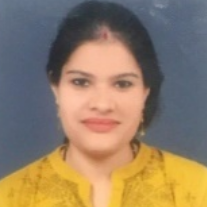
Ankita Srivastava
Work place: Department of Computer Science, Babasaheb Bhimrao Ambedkar University, Lucknow-226010, India
E-mail: ankita31srivastava@gmail.com
Website:
Research Interests: Cloud Computing
Biography
Ankita Srivastava, a Ph. D. scholar in the Department of Computer Science at Babasaheb Bhimrao Ambedkar University (A Central University), Lucknow, India, pursued her B. Tech (IT) in 2011 and M. Tech (CSE) in 2016 from Dr. A P J Abdul Kalam Technical University, Lucknow, India. Her research interests are meta-heuristics, optimization, cloud computing, and security.
Author Articles
A Secure VM Placement Strategy to Defend against Co-residence Attack in Cloud Datacentres
By Ankita Srivastava Narander Kumar
DOI: https://doi.org/10.5815/ijcnis.2024.02.05, Pub. Date: 8 Apr. 2024
With the increasing number of co-residence attacks, the security of the multi-tenant public IaaS cloud environment has become a growing concern. The co-residence attacker creates a side channel to retrieve the secured data. These attacks help the adversary to leak out the sensitive information of the user with whom it is co-located. This paper discusses a secured VM placement technique, Previous Server and Co-resident users First (PSCF), which focuses on facilitating security against the co-residence attack by minimizing the probability of co-locating the malicious user with the authentic user. Co-location resistance and core utilization metrics are utilized to evaluate the algorithm’s performance. The proposed method is simulated, and the result is analysed and compared with existing approaches like Best Fit, Worst Fit, PSSF, and SC-PSSF. It is observed that the proposed approach furnished maximum co-location resistance of 74.32% and a core utilization of 82.63%. Further, the algorithm has shown significant performance in balancing the load and energy consumption. The result has reduced the probability that malicious users co-located with the authentic one, thus reducing the security breach of confidential information.
[...] Read more.Other Articles
Subscribe to receive issue release notifications and newsletters from MECS Press journals